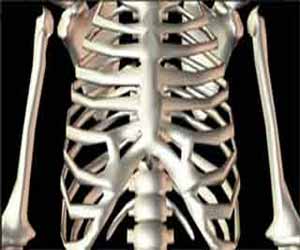- Home
- Editorial
- News
- Practice Guidelines
- Anesthesiology Guidelines
- Cancer Guidelines
- Cardiac Sciences Guidelines
- Critical Care Guidelines
- Dentistry Guidelines
- Dermatology Guidelines
- Diabetes and Endo Guidelines
- Diagnostics Guidelines
- ENT Guidelines
- Featured Practice Guidelines
- Gastroenterology Guidelines
- Geriatrics Guidelines
- Medicine Guidelines
- Nephrology Guidelines
- Neurosciences Guidelines
- Obs and Gynae Guidelines
- Ophthalmology Guidelines
- Orthopaedics Guidelines
- Paediatrics Guidelines
- Psychiatry Guidelines
- Pulmonology Guidelines
- Radiology Guidelines
- Surgery Guidelines
- Urology Guidelines
Bisphosphonates prevent rebound bone decay due to discontinuation of denosumab in Osteoporosis

Recent research demonstrates that prescribing a bisphosphonate after denosumab has been discontinued could prevent rebound of bone decay symptoms in Osteoporosis.
The study was presented at 2019’s annual European Congress of Rheumatology (EULAR) in Madrid, Spain.
Denosumab, approved by the U.S. Food and Drug Administration (FDA) in 2018, strengthens bones in negative circumstances such as preserving bones in cancer patients or reversing bone loss and enhancing bone mineral density (BMD) in postmenopausal females with osteoporosis. It is a human monoclonal antibody that binds to and NF-kB ligand (RANKL), a central regulator of bone metabolism, and by doing so prevents osteoclasts maturation and heps in osteoporosis.
Previous studies have indicated a persistent rebound problem in bone damage after a patient discontinues denosumab treatment, particularly in children. The studies have also shown denosumab to be as effective as alendronate in preventing hip fracture in osteoporosis, and even superior to zoledronic acid in delaying skeletal-related events in advanced cancer.
The Rebound Effect Observatory in Lausanne (ReoLaus) Bone Project tracked bone turnover markers (BTMs), BMD, and risk of spontaneous vertebral fractures in 71 patients for >1 year after their denosumab treatments ended.
Any lumbar spine bone mineral density(BMD) loss over 3.96% at 1 year after denosumab discontinuation (DD) categorized a patient as having suffered significant rebound, placing them in the 'losers' group. Investigators defined DD as beginning 18 months after a patient’s last denosumab injection.
Key findings of the study include:
- The 71 patients studied were post-menopausal women, ages 63.8±8.1 years, who discontinued denosumab after 7.7±2.2 injections.
- These patients’ BMI varied from 23.8±4.5, with an average of 0.96 prevalent fractures per patient; 8.45% had been previously exposed to corticoids and 22.54% to anti-aromatases.
- Thirty patients were classified as losers, as compared to 41 as 'stable,' 17.25 months after each patient’s last denosumab injection.
- The losers group had several defining characteristics other than their rebound bone damage. First, they’d been younger than the stable patients when beginning denosumab injection treatment (61.4±7.3 versus 65.5±8.2 years) and had higher spinal cervical traction (STCx) levels (644.7 versus 474.1 ng/ml).
- There was no difference between the losers and the stable in the rate of bisphosphonates (BP) given under 2 years before denosumab. The occurrence of fresh fractures was low (0.18/patient) in both groups.
- Initial BTM values, measured a median of 7.5 months after the last injection, were comparable between groups (sCTX: losers, 592 ng/ml; stable, 379 ng/ml).
- Losers had never received zoledronate, while 12% of the Stable had. At discontinuation in both groups combined, 59% received zoledronate, 24% alendronate, 3% others, and 14% nothing. By nearly 13 months post-BP, losers had higher BTMS than stable (sCTX 537 vs. 336 ng/ml).
Altogether, the study determined that low BMTs, receiving zoledronate prior to denosumab introduction, and younger patient age all reduce the risk of BMD loss.
“Our study suggests that being younger, having higher bone turnover markers and not having received zoledronate before denosumab introduction increase the risk of bone mineral density loss following discontinuation of denosumab,” said lead investigator Dr Bérengère Aubry-Rozier, of the Rheumatology Unit at Lausanne University Hospital, Switzerland, in a statement.
Even if a bisphosphonate such as zoledronate was introduced at DD, this couldn’t counteract the losses caused by not receiving a bisphosphonate prior to initial denosumab.
“Our results support the use of denosumab after a bisphosphonate to reduce the bone mineral density loss at its discontinuation, and close monitoring of sCTX to maintain levels below the upper limit of the normal range for premenopausal women,” Aubry-Rozier said.

Disclaimer: This site is primarily intended for healthcare professionals. Any content/information on this website does not replace the advice of medical and/or health professionals and should not be construed as medical/diagnostic advice/endorsement or prescription. Use of this site is subject to our terms of use, privacy policy, advertisement policy. © 2020 Minerva Medical Treatment Pvt Ltd